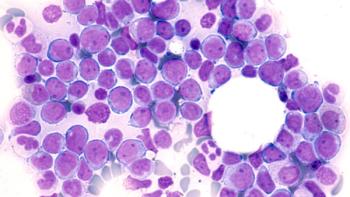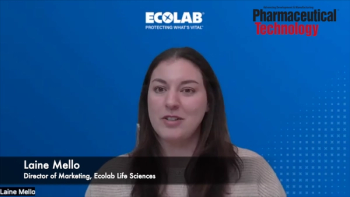
CMC and Analytical Gaps in CRLs: Why They Persist Despite FDA Guidance and How You Can Position Yourself for Success
Key Takeaways
- Increasing CRLs from the FDA highlight CMC and analytical deficiencies, often surfacing late in the review cycle, indicating a disconnect between sponsor expectations and FDA standards.
- Recent CRLs for Replimune and Capricor Therapeutics underscore the impact of inadequate assay validation, tech transfer gaps, and misinterpretation of FDA guidance.
Many companies face FDA complete response letters due to ongoing chemistry, manufacturing, and controls, or CMC, and analytical issues despite early regulatory guidance. Review key risk points in analytical and tech transfer to better ensure commercial readiness.
Despite extensive regulatory engagement throughout the development process, a growing number of companies are encountering chemistry, manufacturing, and controls (CMC) and analytical deficiencies that result in complete response letters (CRLs) from FDA (1-3). These setbacks, often surfacing late in the review cycle, underscore a critical disconnect between sponsor expectations and evolving FDA standards, including as they relate to assay reproducibility, validation, and tech transfer readiness.
Recent surprise CRLs
Earlier this week, FDA doled out a CRL to Replimune, a clinical-stage biotech company focused on oncolytic immunotherapies. The unexpected response to the company’s Biologics License Application (BLA) for RP1 (vusolimogene oderparepvec) in combination with nivolumab for the treatment of advanced melanoma took the company—and biotech investors—by surprise. After all, the drug was on the accelerated approval pathway and had received breakthrough therapy designation and priority review. In reaction, Replimune CEO Sushil Patel, PhD, said, “We are surprised by this FDA decision and disappointed for advanced melanoma patients who have limited treatment options as highlighted by the granting of breakthrough status at the time we provided the IGNYTE primary data [1]. The issues highlighted in the CRL were not raised by the agency during the mid- and late-cycle reviews. Additionally, we had also aligned on the design of the confirmatory study. We strongly believe that RP1 in combination with nivolumab can bring substantial benefit to advanced melanoma patients.”
Another unexpected late-stage denial from FDA came to Capricor Therapeutics just 11 days earlierregarding its BLA for deramiocel, the company’s experimental treatment for cardiomyopathy associated with Duchenne muscular dystrophy (DMD). “While this was an unexpected decision by the FDA, we remain committed to the DMD community to get Deramiocel through the approval process,” said Capricor CEO Linda Marbán, PhD (2). Marbán also noted that the company followed FDA “guidance throughout the process,” adding that “prior to the CRL, the review had advanced without major issues, including a successful pre-licensure inspection and completion of the mid-cycle review.”
“I wonder if part of the problem is that many biotechs do not have sufficient experience in-house, and rely on contract organizations,” said Pharmaceutical Technology Editorial Advisory Board member Chris Moreton, PhD, VP, Pharmaceutical Sciences, FinnBrit Consulting, from his perspective as a consultant for various industry companies over the years. “However, the contract staff may not be sufficiently familiar with the details of the project they are working on. Thus things fall between the cracks, so to speak.”
Changes at FDA & CDC
These CRLs come amid several big changes at FDA, including an unprecedented posting on July 10
Guidance is not approval: The limits of early FDA feedback
It’s easy to interpret early-stage FDA feedback—received during pre-IND, pre-NDA, or mid-cycle Type C meetings—as a reliable indicator that their analytical approach or manufacturing plan is on firm regulatory footing (1-3). However, such guidance is non-binding and frequently based on limited preliminary data. As the FDA reviews a full submission and assesses integrated data from clinical and manufacturing domains, it may revise its interpretation of adequacy.
This risk is heightened when clinical results are modest, or when dealing with novel modalities such as viral vectors or gene therapies, which lack established regulatory precedents. The FDA has emphasized that complex products demand rigorous manufacturing control strategies and robust CMC data to ensure consistency, safety, and efficacy, especially as these therapies move toward late-stage development and licensure (4,5).
Pharmaceutical Technology Editorial Advisory member Board Henrick Johanning, senior VP, Quality & Strategy, Epista Life Science, echoed these thoughts, saying "Late-stage FDA rejections, even after seemingly smooth submissions and inspections, underscore that 'guidance' is not approval. Too often, analytical methods or tech transfer plans that passed early scrutiny collapse under the weight of commercial-scale expectations. The lesson is clear: CMC rigor and lifecycle planning must be treated—as I see it—as front-line regulatory strategy, not a post hoc technical detail."
Assay variability and method drift during scale-up
A recurring source of CRLs involves discrepancies in analytical assay performance, including in potency, purity, or impurity characterization methods (6-8). Problems arise when sponsors fail to adequately control for inter-laboratory variability, or when methods validated under early-stage conditions fail to perform consistently at commercial scale.
In some cases, sponsors transition assays between development phases or contract manufacturing organizations without fully bridging the methods. This may lead to discrepancies that obscure whether product differences are attributable to assay variability or actual quality deviations. For instance, the FDA’s CRLs for certain advanced therapies have cited lack of assay comparability and insufficient method validation at commercial scale (9-11).
Specific weaknesses flagged in recent CRLs include (12):
- Unclear linkage between assay outputs and clinical effectiveness
- Lack of justification for assay sensitivity (LOD/LOQ)
- Use of different assay formats across phases without bridging or revalidation studies
Tech transfer weaknesses exposed under regulatory review
Even when clinical data appear positive, tech transfer gaps can derail a marketing application. The FDA increasingly inspects the coherence between the submitted CMC package and the actual state of commercial readiness (13). It’s very likely why 74% of CRLs issued from 2020 to 2024 cited quality or manufacturing (CMC) deficiencies (14).
Tech transfer missteps include differences in process parameters, raw materials, equipment, or control strategies between clinical and commercial sites, none of which are uncommon when outsourcing is involved (15). Without detailed comparability protocols and analytical bridging data, the FDA may question whether the clinical product is equivalent to the commercial one. This uncertainty is particularly damaging for biologics, where minor process changes can influence product structure or function.
FDA's Office of Pharmaceutical Quality has emphasized that a well-characterized, well-documented, and consistent manufacturing process is essential to ensure that efficacy and safety observed in clinical trials will translate to marketed product batches (16).
Incomplete process transfer or insufficiently documented process changes have led to significant delays for several companies (17,18). For example, changes in process parameters—such as fill-finish specifications or facility equipment—without aligned documentation or sufficient bridging led to regulatory requests for additional data, sometimes only discovered in late review cycles, resulting in extended reviews or CRLs.
Interpreting FDA language: When "inadequate evidence" means CMC
In CRLs, the FDA may not always explicitly identify manufacturing shortcomings. Instead, sponsors often receive general statements citing inadequate evidence of effectiveness or trials being not adequately interpretable (1,2), similar to the feedback that Replimune received. However, such language can be a proxy for deeper concerns about assay reproducibility, batch consistency, or process control.
While the agency officially cited trial heterogeneity in Replimune’s CRL for RP1, it’s possible that analytical variation across patient subgroups may have compromised the agency’s confidence in the submitted data. Without robust assay performance or clear comparability across lots, even well-conceived trials can appear inconclusive.
This underscores the need to interpret CMC-related risk not just through the lens of assay design, but also in terms of how variability is managed, explained, and documented throughout the product lifecycle (Table).
Practical steps to reduce CRL risk
Given the increasing complexity of modern therapies and FDA’s shifting standards, companies are well advised to embed CMC excellence into every phase of development:
- Simulate commercial-scale conditions early in validation and comparability planning. Waiting until NDA to finalize CMC strategy is a high-risk gamble.
- Implement assay lifecycle management tools to track drift, inter-lab variability, and trending across sites and tech transfer milestones.
- Develop comparability protocols upfront, not reactively. The FDA expects a clear rationale and data package whenever process or site changes occur.
- Maintain rigorous documentation of regulatory communication. Misinterpretation of conditional feedback is a common—and preventable—pitfall.
- Conduct pre-submission gap assessments or internal mock reviews. Third-party audits or cross-functional CRL simulations can flag weak spots before FDA does.
A front-line risk factor
CMC is no longer a background concern; it is now a front-line risk factor for product approval. As FDA expectations tighten and more applications undergo heightened scrutiny, especially for complex or expedited pathways, manufacturing and analytical strategy must be treated as a core part of clinical success. Sponsors that invest early in robust assay validation, comparability, and tech transfer readiness are better positioned to avoid both the financial and reputational costs of a CRL.
References
- Replimune.
Replimune Receives Complete Response Letter from FDA for RP1 Biologics License Application for the Treatment of Advanced Melanoma. Press Release . July 22, 2025. - Capricor.
Capricor Therapeutics Provides Regulatory Update on Deramiocel BLA for Duchenne Muscular Dystrophy . Press Release. July 11, 2025. - Levinson L.
Capricor Plans for Deramiocel Resubmission After FDA Rejection . MuscularDystrophyNews.com. July 15, 2025. - FDA.
Cellular & Gene Therapy Guidances (accessed July 23, 2025). - Pineiro-Sanchez.
Integrated Quality Assessment: Drug Product (accessed July 23, 2025). - Lurie, P. Comparison of Content of FDA Letters Not Approving Applications for New Drugs and Associated Public Announcements from Sponsors: Cross Sectional Study. BMJ. 2015;350.doi:
https://doi.org/10.1136/bmj.h2758 . - Cooley.
Beware of BIMO: Complete Response Letter, Warning Letter and Shareholder Lawsuit Follow FDA Data Integrity Findings (accessed July 23, 2025). - Ocampo A.
Complete Response Letters Due to Failed PAIs – More to Come ? LachmanConsultants.com. June 2, 2016. - Alliance for Regenerative Medicine.
ARM-USP Workshop “Comparability in Cell & Gene Therapies” Final Report (accessed July 23, 2025). - FDA.
Guidance for Industry: Potency Tests for Cellular and Gene Therapy Products (accessed July 23, 2025). - Cockroft A, Wilson A.
Comparability: What We Can Learn from the Review of Advanced Therapy Medicinal Products . Regenerative Medicine. 2021;16(7):655-667. - FDA.
Complete Response Letters (accessed July 23, 2025). - DiGlulio, D.
FDA’s Pre-Approval Inspection (PAI) Program and How to Prepare for A Successful Outcome (accessed July 23, 2025). - D2V Clinical.
LinkedIn post (accessed July 23, 2025). - Kyung Lee, N; Wook Chang, J.
Manufacturing Cell and Gene Therapies: Challenges in Clinical Translation. Ann Lab Med. 2024;44(4):314-323. - FDA.
Use of Real-World Evidence to Support Regulatory Decision-Making for Medical Devices Guidance for Industry andFood and Drug Administration Staff (accessed July 23, 2025). - Straus J.
9 Common Tech Transfer Pitfalls to Avoid . BioprocessOnline.com. July 24, 2024. - Leahu T.
Top 5 Reasons Tech Transfer Keeps Breaking… And What We Can Do About it . L7Informatics.com. May 19, 2025.
Newsletter
Get the essential updates shaping the future of pharma manufacturing and compliance—subscribe today to Pharmaceutical Technology and never miss a breakthrough.




